- Total Pharmacy® August 2025
- Volume 03
- Issue 04
Strategies for Expanding Revenue Streams in Independent Pharmacy Today and in the Future
Tara Pfund, PharmD, chief strategy officer with Cascadia Pharmacy Group, discusses various ways community pharmacists can expand services and support clinical reimbursement.
When it comes to expanding pharmacy services and improving reimbursement, independent pharmacies must understand the basics of medical billing, value-based care, partnerships, and daily expansion opportunities.
"It can feel really overwhelming to think of creating a net-new service, being a credentialed provider,” said Tara Pfund, PharmD, chief strategy officer with Cascadia Pharmacy Group. “What type of technology would you use to submit your claims? Will they be paid? A lot of times, I see pharmacy teams putting it off until they’ve got enough time. If you don’t put the big rocks in first, you’ll never get them in at all.”
At the Total Pharmacy Solutions Summit Summer 2025, Pfund hosted a session titled Expanding Revenue Streams in Independent Pharmacy: Strategies for Today and the Future. Sponsored by American Associated Pharmacies (AAP), Pfund’s presentation received AAP support because of the organization’s close relationship with Cascadia Pharmacy Group.
“AAP is one of America’s largest independent pharmacy organizations, a national cooperative of more than 2000 member pharmacies,” according to AAP. “Cascadia Pharmacy Group represents more than 40 of those member locations. Cascadia’s CEO, Jeff Harrell, is chairman of AAP’s board of directors and also currently serves as president of [the National Community Pharmacists Association’s] board and [is] a member of the AlignRx board.”
READ MORE:
Read on for key takeaways from Pfund’s presentation:
- “One of the things I always talk to teams about...is a lot of times when you want to launch a clinical service or do medical billing or create a provider-payer partnership, it’s something that we think we have to put off until we have enough time to do it,” said Pfund. “It can feel really overwhelming to think of creating a net-new service, being a credentialed provider.” With this potential barrier in mind, Pfund believes the best step forward is to simply begin expanding the clinical services that are already offered. Once more services are offered and others are improved, pharmacies have a significant opportunity to expand revenue streams.
- Pfund explored the 6 steps in implementing medical billing and value-based care services. Those steps included identifying the services, credentialing and contracting, documentation, billing, training, and revenue cycle management (RCM). After finding the services they can bill for, pharmacies should get these services credentialed and contracted to be viable options for billing in their state. Finally, Pfund mentioned how pharmacies need to establish documentation, how they should bill for services, and what training is necessary. Pharmacies can then implement their services and diversify revenue through RCM solutions.
- “We really want to look at alternative payment models where there is a link to quality and value, where we can make sure that patients are being cared for in a way that improves overall quality, and that pharmacists and pharmacies are reimbursed for those types of programs,” continued Pfund. Speaking to value-based care initiatives, Pfund believes these alternative payment models can enhance the pharmacists’ role while also diversifying revenue streams within pharmacy businesses that may be struggling with reimbursement.
- She delved into the core principles of operating a pharmacy business and the regulations in place that impede pharmacists from billing for more medical services. Although community pharmacies are mainly employed to dispense medications and health care products, Pfund advises pharmacists to have conversations with payers, patients, and health care providers to better understand the needs of patients in their communities. Pfund also provided advice focused on engaging the entire pharmacy team and working with other stakeholders on ways to improve bottom lines, as well as patient outcomes.
“I’ve been really lucky to have a career where I’m part of small changes coming together to create a big tidal wave of change. We’re able to make a big difference and change one person’s life that slowly helps change one more person’s life,” concluded Pfund. “Next thing you know, [you have] an entire small community where the payers and the providers and the pharmacies are all engaged in this way to keep independent pharmacies in business and have there be more access points of patient care. It’s really neat, and I’ve seen it happen firsthand.”
To read these stories and more,
Articles in this issue
Newsletter
Pharmacy practice is always changing. Stay ahead of the curve with the Drug Topics newsletter and get the latest drug information, industry trends, and patient care tips.













































































































































